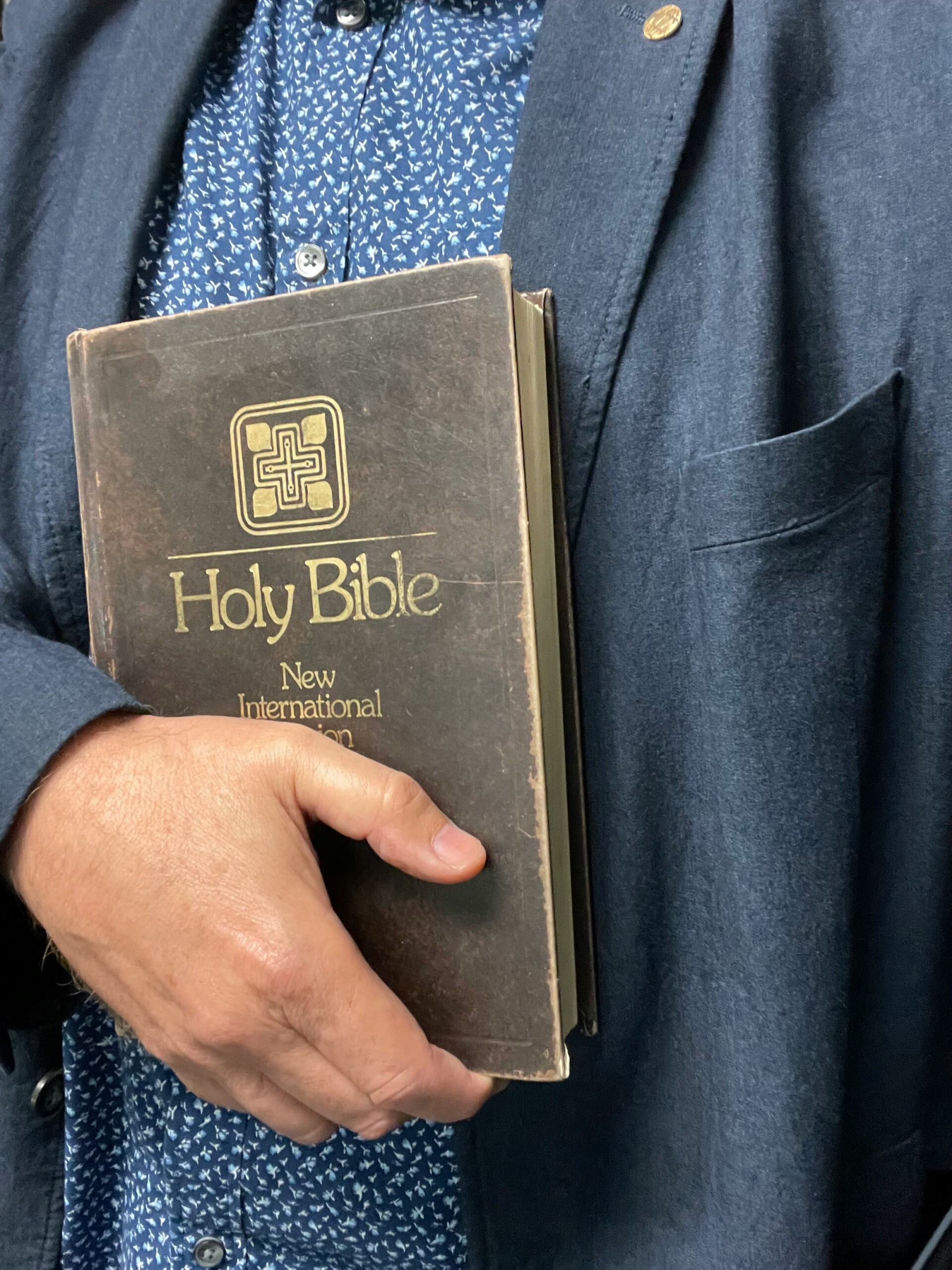
Biblical Critical Theory: How the Bible’s Unfolding Story Makes Sense of Modern Life and Culture
Biblical Critical Theory is sparklingly clear and engagingly written. Part of the reason it is so engaging is that Christopher Watkin’s personal story is woven into the story without ever being intrusive or grating. As Christian academic writers, we can learn from the way he as a human being seeking truth and wholeness addresses us as human beings seeking the same. There is no trace of the obfuscation and patronizing tone that so often goes with writing on complex topics, often especially Christian writing.
The book might have been subtitled “Augustine for the 21st century” following Thomas Piketty’s attempt to do this for Marx.1 Watkin describes a holiday sometime after coming to Christian faith when he was captivated by Augustine’s City of God and was inspired to do with contemporary culture what Augustine did in his own cultural moment of a declining Roman Empire, which had in the eyes of many become inextricably entwined with Christian faith. In the first part of City of God Augustine dissects Roman culture, laying bare its contradictions and vanities, while in the second part he powerfully retells the Christian story. Watkin of course is not alone in seeing Augustine as the guide we need in this cultural moment; one thinks of Oliver O’Donovan’s work in ethics and political theology, Eric Gregory’s reading of Augustine in relation to liberalism, Charles Mathewes’s work on Christian political engagement, and even at times John Milbank. Americans, with their own sense of a declining empire, and the complex relationship between Christianity and the American project, have been particularly attracted to Augustine as a guide.
Watkin summarizes what he is doing in his Introduction: “This . . . is a book about the ‘so what?’ of Christian belief. My aim in these pages is to paint a picture of humanity and of our world through the lens of the Bible and to compare aspects of this image to alternative visions. . . . It does not try to explain and defend the Bible to culture; it seeks to analyse and critique the culture through the Bible” (2). He also explains the intellectual tools that he will be using to dissect culture. Rather than worldviews, he will work with “figures,” which are an enlargement of figures of speech that “embrace all the patterns and rhythms that shape our lives” (5). Figures “allow us to move between ideas, stories, behaviours, institutions, time, and space” (10). This is a wise choice which avoids the conceptual heaviness of much worldview analysis in Christian circles. At Alphacrucis University College, with our vision of an Australian Pentecostal research university, we have been dissatisfied with the results of importing worldview analysis from North American Christian colleges and are experimenting with different ways of doing integrative Christian scholarship. By no means have we yet worked out how to do this in our Australian and Pentecostal context, albeit a very different Pentecostal context to North America (Australia began as a British colony which brought an established Anglican church, but Pentecostals are now the second largest Australian religious group after the Catholic Church, as well as being our most educated religious group, being the most racially diverse, and having by far the youngest age profile).
But I digress. Along with “figures,” Watkin uses the language of “worlds,” which he explains are a cluster of figures, reducible to none. “Worlds” are closest to Charles Taylor’s notion of a “social imaginary,” but, Watkin hopes, are more flexible (10). He wants to be able to “move between texts, behaviour, ideas, metaphysics, objects, and institutions without any of these exerting a controlling influence over all the others” (12). Another technique called “diagonalization” helps him to explore the relationship between figures of contemporary culture and those of the Bible. It consists of “cutting across and rearranging false cultural dichotomies” (15). Finally, his criterion for success is whether his version of the Christian story, assuming it is a faithful version, out-narrates contemporary culture, in the sense of telling a bigger and better story (21). Watkin is on guard against the trap into which so many Christian cultural critics have fallen of claiming cheap victories against versions of contemporary culture that would not be recognized by their proponents as faithful and strong accounts of that culture (27).
It is quickly evident that Watkin has been shaped by Reformed theology, and writers such as Francis Schaeffer and Cornelius Van Til; even a bit of Kuyper and Dooyeweerd. He draws on a dazzling array of writers, including C. S. Lewis, G. K. Chesterton, Oliver O’Donovan, John Milbank, Sarah Coakley, David Bentley Hart, William Cavanaugh, Larry Siedentop, Carl Truman, Charles Taylor, and Esther Lightcap Meek, as well as interacting with French postmodern theorists and sometimes Heidegger. This is not a book dashed off quickly to satisfy a tenure committee or eager publisher but the product of decades of reading and reflection.
In contrast to the way Augustine structures City of God, Watkin integrates his cultural criticism with the biblical narrative. He begins with the Trinity, which shows that ultimate reality is personal, absolute, relational, and about love rather than violence. Then chapters follow on creation and humanity, where the creator-creature distinction features prominently, including three chapters on sin (as befits an author shaped by the Reformed tradition), after which he moves into the story of God’s dealings with Israel. There is a stimulating chapter on the wisdom literature (“if God is into poetry, then why aren’t you?” [330]), but sadly no treatment of the Psalms. Then the incarnation, which is “unlike . . . anything else that has happened in the world before or since” (342) and involves the scandals of historicity, particularity, materiality, and the personal (346). A chapter on the ministry of Jesus has a lengthy and inspiring description of love as the center of his ministry, with love seen in Augustinian terms as ultimately only appropriate for God. Then love of God properly orders our other loves and prevents them becoming destructive. The book’s argument continues with chapters on the cross, with its scandalous and subversive aspects, and the resurrection, which “introduces something radically new into the fabric of the universe and into our understanding of the possibilities and limits of our world, transforming the Christian’s way of inhabiting reality” (437).
It seems to me that the Holy Spirit is neglected in Watkin’s version of the story as he jumps from the resurrection and ascension straight to our contemporary cultural situation. He writes that we are now in the “last days,” when there will be no further great divine intervention until the eschaton. The chapter on the church works from the lenses of civil society and the secular. I would have thought the story of the church would be better told through the book of Acts as a Spirit-inspired mission. Nevertheless, Watkin’s eight chapters on the last days and eschatology contain some of the sharpest cultural criticism and inspiration in the book. His diagnosis of modernity as comprising individualism, universalism, and secularism provides a framework for these chapters, and the book of Revelation is his main biblical reference point. His critiques of the commodification of identity in our world and of the false hope of progress are especially powerful. In conclusion of his discussion of the consequences of biblical eschatology, Watkin writes: “I have no words to describe the glory of this coming reality” (598) and turns to praise, which is the appropriate ending of all theology (601–2).
It is a gripping story and there are many gems of wisdom along the way. Some I found especially helpful were Watkin’s discussion of transperspectivalism (327–8) and the hermeneutics of charity (504–6), something that all Christian academics including me need to be reminded of regularly.
My main disappointment with the book, perhaps understandably as an economist, was the discussion of markets. The most important passages are in his chapter on creation where figures of the market are contrasted with biblical figures, especially gratuity, and his chapter on church and society in the last days, where the church is seen as a counter to the market. In the spirit of Watkin’s invitation for others to take up the unfinished task of Christian social and cultural theory in areas he has neglected or got wrong, there is much still to be done on markets and economics. What Watkin writes on markets seems superficial and driven by larger philosophical concerns rather than engagement with the complexities of actually existing markets. For instance, the market and the state seem to play the parts respectively of the “many” and the “one” in his philosophical scheme and are then diagonalized by the “few” of the church (461ff).
It is telling that in these sections we encounter some of the rare instances of obscure prose in the book. I found it hard to know what to make of passages such as “This market paradigm drags the gratuity of creation back into the logic of necessity, forcing the incalculable onto the balance sheet of profit and loss” (63) and
Both these paradigms—the paradigm of gift and the paradigm of the market—have at their heart an idea of excess, but their respective excesses stand in stark contrast. The biblical excess of creation is God’s superabundant divine generosity of freely and lovingly bringing into being an unnecessary world, and it issues in measureless praise and wonder. The market paradigm of excess, by contrast, is a surplus of overproduction, overconsumption, and limitless profit that become necessary for the maintenance of economic growth and that issue in increasing wealth for some and increasing inequality between all. (64)
Watkin seems here to be criticizing markets for failing to do something that they cannot reasonably be expected to do.
Perhaps lacking expertise in economics and unwilling to invest time in serious study of how markets actually operate, Watkin unwisely chose to recycle the views of theologians such as William Cavanaugh, John Milbank, and David Bentley Hart. They are unreliable guides on economics, despite other merits of their theologies.
It was strange that the whole discussion is on markets with no mention of economics, aside from a couple of trivial references to Adam Smith. Economics as a way of thinking is surely a significant component of contemporary culture, and I would argue is one of the main influences on contemporary culture. Can we understand markets and market society without any reference to the discipline that is inextricably linked to their rise in the modern world? Does Watkin believe that modern economics is just footnotes to Hobbes and Locke, along the lines of C. B. Macpherson’s unreliable account of the birth of the discipline? Economics surely warrants more serious attention in a work of Christian cultural criticism.
Despite my disappointment with the discussion of markets and economics, Christopher Watkin gets so much right. The book is attentive to culture and nourished by the Christian scriptures. This is an extraordinary, important, and inspiring book. Nothing comparable to its scope and insight exists in the contemporary literature of Christian cultural criticism, except perhaps John Milbank’s Theology and Social Theory. It will be a blessing to many Christian leaders, students, and academics in the challenging times in which we live.
























2 Comments